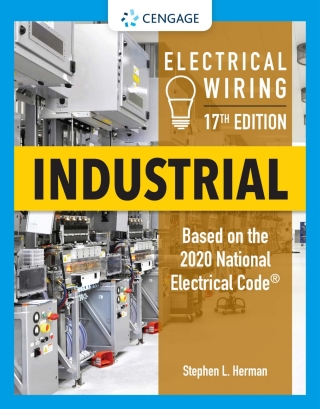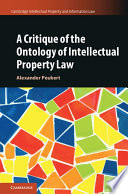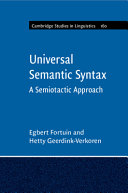Buy Electrical Wiring Industrial, 17th Edition PDF ebook by author Stephen L. Herman – published by Cengage Learning in 2021 and save up to 80% compared to the print version of this textbook. With PDF version of this textbook, not only save you money, you can also highlight, add text, underline add post-it notes, bookmarks to pages, instantly search for the major terms or chapter titles, etc.
You can search our site for other versions of the Electrical Wiring Industrial, 17th Edition PDF ebook. You can also search for others PDF ebooks from publisher Cengage Learning, as well as from your favorite authors. We have thousands of online textbooks and course materials (mostly in PDF) that you can download immediately after purchase.
Note: e-textBooks do not come with access codes, CDs/DVDs, workbooks, and other supplemental items.
eBook Details:
Full title: Electrical Wiring Industrial, 17th Edition
Edition: 17th
Copyright year: 2021
Publisher: Cengage Learning
Author: Stephen L. Herman
ISBN: 9780357142400, 9780357142394
Format: PDF
Description of Electrical Wiring Industrial, 17th Edition:
Written for industrial wiring courses at two-year community and technical colleges, ELECTRICAL WIRING INDUSTRIAL, Seventeenth Edition, walks learners step-by-step through the basics of installing wiring systems in an industrial building. A set of blueprints included with the text enables students to apply chapter concepts to a realistic industrial building project as they progress through the content and continue to build practical skills. This pairing of theory and application helps students understand and meet requirements set forth by the National Electric Code (NEC). Now printed in vibrant full color, the Seventeenth Edition is ideal for engaging today’s visual learners, with abundant drawings, schematics, and illustrations to help bring key concepts to life and connect chapter material to real-life applications. ELECTRICAL WIRING INDUSTRIAL, Seventeenth Edition, completes Cengage’s NEC-based Electrical Wiring series, which includes ELECTRICAL WIRING RESIDENTIAL and ELECTRICAL WIRING COMMERCIAL. All books in this series have been thoroughly updated to reflect the 2020 NEC, the industry standard for layout and installation of electrical systems.Important Notice: Media content referenced within the product description or the product text may not be available in the ebook version.
Table of Contents of Electrical Wiring Industrial, 17th Edition PDF ebook:
ContentsPrefaceAcknowledgmentsChapter 1: Plans and SiteworkObjectivesConstruction PlansExplanation of Plan SymbolsSiteworkTesting the Site for Grounding RequirementsInterpreting the Site PlanMetrics (SI) and the NECSummaryReview QuestionsChapter 2: The Unit SubstationObjectivesThe High-Voltage SectionTransformer ProtectionOvercurrent ProtectionDetermining Transformer Fuse SizeThe Transformer SectionThe Low-Voltage SectionThe High-Voltage Metering EquipmentService EntrancesTransformer MaintenanceTransformer Overcurrent ProtectionReview QuestionsChapter 3: Feeder Bus SystemObjectivesFeeder DuctsThe Circuit-Breaker CubiclesPlug-In BuswayBus PlugsReview QuestionsChapter 4: PanelboardsObjectivesPanelboardsBranch-Circuit Protective DevicesPanelboard Protective DevicePower PanelboardsReview QuestionsChapter 5: Trolley BuswaysObjectivesThree-Phase Trolley BuswayThe Trolley Busway RunsLighting in the Manufacturing AreaLighting in the Boiler RoomReview QuestionsChapter 6: Using Wire Tables and Determining Conductor SizesObjectivesConductorsInsulation TypeCorrection FactorsMore Than Three Conductors in RacewayUnderground ConductorsSelecting Conductors for Equipment InstallationCalculating Conductor Sizes and ResistanceLong Wire LengthsCalculating ResistanceParallel ConductorsTesting Wire InstallationsThe American Wire GaugeReview QuestionsChapter 7: Signaling SystemsObjectivesThe Master ClockThe Program SystemThe Paging SystemThe Fire Alarm SystemReview QuestionsChapter 8: Basic Motor ControlsObjectivesTwo-Wire ControlsThree-Wire ControlsSchematic SymbolsOverload RelaysSchematics and Wiring DiagramsStart-Stop Push-Button Control CircuitForward-Reverse ControlBasic Air-Conditioning CircuitTiming RelaysReview QuestionsChapter 9: Motors and ControllersObjectivesThe Machines and Their MotorsMotor TypesSingle-Speed Squirrel-Cage Induction MotorThe Wound-Rotor Induction MotorDetermining Direction of Rotation for 3-Phase MotorsConnecting Dual-Voltage 3-Phase MotorsDual-Voltage Single-Phase MotorsDetermining Direction of Rotation for Single-Phase MotorsTerminal Identification for Direct-Current MotorsDetermining the Direction of Rotation of a Direct-Current MotorDirect-Current Power SuppliesVariable-Frequency DrivesReview QuestionsChapter 10: Motor InstallationObjectivesMotor Nameplate DataMotor InstallationMotor TablesDirect-Current MotorsSingle-Phase Alternating-Current MotorsTwo-Phase MotorsThree-Phase MotorsDetermining Conductor Size for a Single MotorOverload SizeOverload HeatersProtecting Large Horsepower MotorMotor Starter SizesDetermining Locked-Rotor CurrentShort-Circuit ProtectionMultiple Motor CalculationsReview QuestionsChapter 11: Power FactorObjectivesLoading on Alternating-Current CircuitsPower Factor MeasurementThe Synchronous CondensersThe Tie-InCorrecting Power Factor with CapacitorsCorrecting Motor Power FactorInstalling CapacitorsTesting CapacitorsReview QuestionsChapter 12: Ventilating, Air Conditioning, and Other FacilitiesObjectivesThe Ventilator and Exhaust SystemsSpecial TerminologyThe Cooling EquipmentLiquid ChillersThe Precipitation UnitReview QuestionsChapter 13: System ProtectionObjectivesSystem ProtectionCircuit BreakersFusesReview QuestionsChapter 14: Lightning ProtectionObjectivesAtomic StructureHow Lightning Is GeneratedMaster LabelBuilding ProtectionSafety RulesReview QuestionsReferencesChapter 15: Site LightingObjectivesLamp SelectionIlluminance SelectionsPower LimitationLuminaire PlacementElectrical InstallationReview QuestionsChapter 16: Programmable Logic ControllersObjectivesDifferences between Programmable Logic Controllers and Personal ComputersBasic ComponentsInstalling Programmable Logic ControllersThe Differential AmplifierReview QuestionsChapter 17: Developing a Program for a PLCObjectivesAssigning Inputs and OutputsConverting the SchematicReview QuestionsChapter 18: Fiber OpticsObjectivesFiber OpticsFiber-Optic ConnectorsFiber-Optic LightingReview QuestionsChapter 19: Hazardous LocationsObjectivesEquipment ApprovalIntrinsically Safe Circuits and EquipmentEquipmentSealsCircuit-Breaker PanelboardsLuminairesMotor ControlsFlexible Cords and ReceptaclesHazardous AreasExplosionproof EquipmentReview QuestionsChapter 20: HarmonicsObjectivesHarmonic EffectsCircuit-Breaker ProblemsBus Ducts and Panelboard ProblemsDetermining Harmonic Problems on Single-Phase SystemsDetermining Harmonic Problems on 3-Phase SystemsDealing with Harmonic ProblemsDetermining Transformer Harmonic Derating FactorReview QuestionsElectrical SpecificationsCode IndexSubject Index





